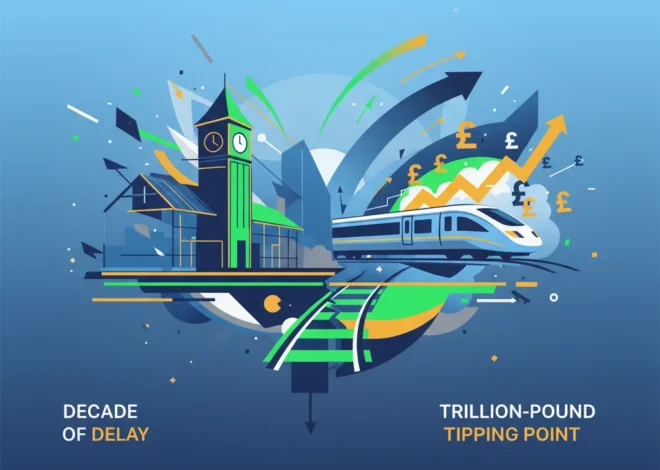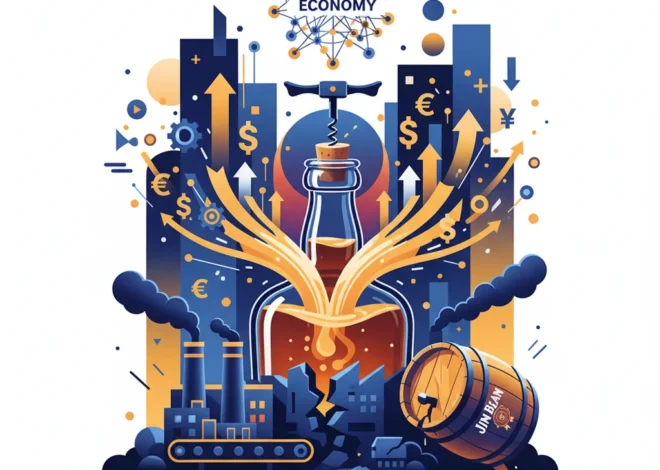
Beyond the Balance Sheet: Why Financial Confidence is the Bedrock of a Thriving National Economy
In the relentless churn of the global economy, we often focus on macroeconomic indicators: GDP growth, inflation rates, and the complex movements of the stock market. Yet, a far more fundamental metric of a nation’s health lies within the households of its citizens: financial confidence. This isn’t merely about understanding finance; it’s about having the self-assurance to make sound financial decisions that build personal resilience and, by extension, national prosperity. A recent letter to the Financial Times by Vim Maru, CEO of Barclays UK, cast a sharp spotlight on this issue, framing it as a “decisive step towards building a financially confident nation.”
This call to action from a leader in the banking industry is more than just corporate commentary; it’s a crucial acknowledgment of a deep-seated challenge. For too long, the responsibility for financial well-being has been placed squarely on the individual, often without providing the necessary tools or education. Maru’s letter signals a potential paradigm shift—one where financial institutions, educators, and policymakers must form a united front. This post will delve into the critical distinction between financial literacy and financial confidence, explore the profound economic consequences of inaction, and outline a multi-faceted strategy for forging a future where every citizen is empowered to navigate the complexities of modern finance.
The Critical Gap: Understanding Financial Literacy vs. Financial Confidence
It’s easy to use the terms “financial literacy” and “financial confidence” interchangeably, but they represent two distinct and equally important concepts. Understanding the difference is the first step toward addressing the real problem.
- Financial Literacy is the “what.” It’s the knowledge component—understanding concepts like compound interest, inflation, risk diversification in investing, and how credit scores work. It’s the theoretical foundation of personal finance.
- Financial Confidence is the “how” and the “will.” It is the belief in one’s own ability to apply that knowledge effectively. It’s the courage to open a stocks and shares ISA, the discipline to stick to a budget, and the foresight to plan for retirement without being paralyzed by jargon and fear of the stock market.
You can be highly literate but lack confidence. Think of someone who has read dozens of books on trading but is too risk-averse to ever make an investment, or a person who understands the mathematics of a mortgage but is too intimidated by the process to apply. The UK’s Money and Pensions Service (MaPS) highlights this gap; their research indicates that while many people may have access to information, a significant portion of the population feels overwhelmed by financial decisions. According to their 2021 strategy report, over 11.5 million people in the UK have less than £100 in savings, a startling statistic that speaks to a lack of both resources and the confidence to build a financial safety net.
This confidence gap is where the modern challenge lies. In an era of sophisticated fintech, democratized trading platforms, and a dizzying array of financial products, knowledge alone is no longer enough. We must also cultivate the practical wisdom and self-assurance to act. Beyond the Arch: Deconstructing the Economics of Monumental Ambition
The Macroeconomic Cost of Low Financial Confidence
A lack of financial confidence isn’t just a personal struggle; it creates significant headwinds for the entire economy. When a large segment of the population is financially fragile and hesitant, the negative consequences ripple outward, impacting everything from national debt to economic growth.
Here are some of the key economic impacts:
- Reduced Capital Market Participation: A populace that fears the stock market keeps its money in low-yield savings accounts, where its value is eroded by inflation. This means less capital flowing into businesses for innovation and expansion, ultimately stifling economic growth. Confident investors fuel the engine of the economy by providing the risk capital that drives progress.
- Increased Household Debt & Defaults: Individuals lacking confidence are more susceptible to predatory lending and are less likely to manage credit effectively. This leads to higher levels of unsustainable debt, which can trigger financial crises on a larger scale, as seen in the 2008 financial crisis. Research from institutions like the OECD has consistently shown a strong correlation between financial literacy and healthier debt management.
- Strain on Social Safety Nets: When people fail to save adequately for retirement or emergencies, the burden falls upon the state. A nation of poor savers today creates a massive liability for the government of tomorrow, diverting funds that could be used for infrastructure, healthcare, and education.
- Lower Economic Resilience: Financially fragile households are less able to withstand economic shocks like a recession, a pandemic, or a sudden spike in the cost of living. This lack of a financial cushion can turn a manageable economic downturn into a widespread crisis, prolonging recovery and deepening inequality.
A Blueprint for Building a Financially Confident Nation
As Vim Maru’s letter suggests, building a financially confident nation requires a concerted effort from multiple stakeholders. It cannot be solved by a single app or a one-off school lesson. It requires a systemic, lifelong approach. Below is a proposed framework built on four essential pillars: Education, Corporate Responsibility, Policy, and Technology.
To visualize how this can be implemented, here is a breakdown of key financial education stages from childhood to adulthood:
| Life Stage | Key Learning Objectives & Confidence Goals | Primary Delivery Channel |
|---|---|---|
| Primary School (Ages 5-11) | Understanding the concepts of money, saving, and needs vs. wants. Goal: Build a positive and non-anxious relationship with money. | Schools, Parents, Educational Games |
| Secondary School (Ages 12-18) | Learning about budgeting, debt, basic banking, earning income, and an introduction to investing and the economy. Goal: Develop practical skills for financial independence. | Schools (Mandatory Curriculum), Banking Apps for Teens |
| Higher Education & Early Career (Ages 18-30) | Deepening knowledge of student loans, credit scores, retirement accounts (pensions), stock market fundamentals, and long-term financial planning. Goal: Make informed decisions at major life milestones. | Universities, Employers (Financial Wellness Programs), Fintech Tools |
| Adulthood & Pre-Retirement (Ages 30+) | Advanced topics like mortgage management, wealth building, estate planning, and navigating complex financial products. Goal: Achieve long-term financial security and resilience. | Financial Advisors, Workplace Seminars, Advanced Digital Tools |
This structured approach ensures that financial concepts are introduced at an age-appropriate level, building a foundation of knowledge and confidence over time. India's Energy Paradox: Why Green Power Can't Keep Pace with a Trillion-Dollar Economy
The Role of Technology: Fintech as the Great Enabler
The rise of financial technology, or fintech, presents an unprecedented opportunity to close the confidence gap. While traditional banking can often feel opaque and intimidating, fintech solutions are built around user experience, accessibility, and empowerment.
Modern financial technology can help in several ways:
- Demystifying Investing: Platforms like Robinhood, eToro, and Freetrade have lowered the barrier to entry for the stock market, allowing people to start investing with small amounts. Their intuitive interfaces and educational content help build confidence through hands-on experience.
- Automating Good Habits: Apps like Plum or Moneybox use AI to analyze spending and automatically set aside small, manageable amounts of money, making saving effortless and building a financial cushion without conscious effort.
- Personalized Guidance: Robo-advisors and AI-driven financial planning tools can provide personalized, data-driven recommendations at a fraction of the cost of a human advisor, making sophisticated financial strategy accessible to the masses.
There are even explorations into how emerging technologies like **blockchain** could bring greater transparency to financial transactions and contracts, potentially rebuilding trust in a system that many feel is opaque. However, technology is a double-edged sword. The gamification of **trading** can also encourage reckless behavior, and the digital divide means we must ensure that less tech-savvy populations are not left behind. Therefore, the integration of fintech must be paired with a strong emphasis on foundational education and ethical design. The £100 Billion Idea: A Simple Fix to Supercharge Britain's Stagnant Economy
Conclusion: A Shared Responsibility for a Prosperous Future
The journey towards a financially confident nation is not a short-term project but a long-term, generational commitment. Vim Maru’s call to action is a vital reminder that this responsibility does not lie with one entity alone. It requires a cohesive national strategy where the government mandates and supports financial education, schools integrate it into their core curriculum, and the financial services industry—from incumbent banks to nimble fintech startups—innovates responsibly to create tools that empower, not exploit.
Building financial confidence is an investment in our collective future. It strengthens the economy, reduces social inequality, and builds a more resilient society capable of weathering any storm. It is about transforming finance from a source of anxiety into a tool of empowerment, enabling every individual to take control of their future and contribute to a more stable and prosperous world.


